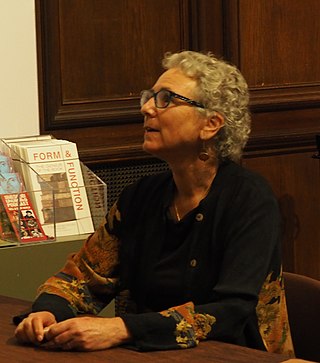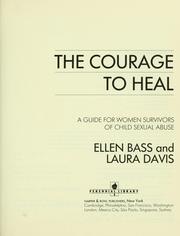The Satanic panic is a moral panic consisting of over 12,000 unsubstantiated cases of Satanic ritual abuse starting in the United States in the 1980s, spreading throughout many parts of the world by the late 1990s, and persisting today. The panic originated in 1980 with the publication of Michelle Remembers, a book co-written by Canadian psychiatrist Lawrence Pazder and his patient, Michelle Smith, which used the discredited practice of recovered-memory therapy to make sweeping lurid claims about satanic ritual abuse involving Smith. The allegations which afterwards arose throughout much of the United States involved reports of physical and sexual abuse of people in the context of occult or Satanic rituals. In its most extreme form, allegations involve a conspiracy of a global Satanic cult that includes the wealthy and elite in which children are abducted or bred for human sacrifices, pornography, and prostitution, an allegation that returned to prominence in the form of QAnon.
In psychology, false memory syndrome (FMS) is a condition in which a person's identity and relationships are affected by false memories of psychological trauma, recollections that are factually incorrect yet strongly believed. Peter J. Freyd originated the term partly to explain what he said was a false accusation of sexual abuse made against him by his daughter Jennifer Freyd and his False Memory Syndrome Foundation (FMSF) subsequently popularized the concept. The principle that individuals can hold false memories and the role that outside influence can play in their formation is widely accepted by scientists. However FMS is not recognized as a psychiatric illness in any medical manuals including the ICD-10 or the DSM-5.
Repressed memory is an alleged psychiatric phenomenon which involves an inability to recall autobiographical information, usually of a traumatic or stressful nature. The concept originated in psychoanalytic theory where repression is understood as a defense mechanism that excludes painful experiences and unacceptable impulses from consciousness. Repressed memory is a controversial concept, particularly in legal contexts where it has been used to impugn individuals unfairly and inaccurately, leading to substantial harm. At the same time, an American Psychological Association working group indicated that while "most people who were sexually abused as children remember all or part of what happened to them, it is possible for memories of abuse that have been forgotten for a long time to be remembered". Although Sigmund Freud later revised his theory, he initially held that memories of childhood sexual trauma were often repressed yet the traumas unconsciously influenced behavior and emotional responding.

Michelle Remembers is a discredited 1980 book co-written by Canadian psychiatrist Lawrence Pazder and his psychiatric patient Michelle Smith. A best-seller, Michelle Remembers relied on the discredited practice of recovered-memory therapy to make sweeping, lurid claims about Satanic ritual abuse involving Smith, which contributed to the rise of the Satanic panic in the 1980s. While the book presents its claims as fact, and was extensively marketed on that basis at the time, no evidence was provided; all investigations into the book failed to corroborate any of its claims, with investigators describing its content as being primarily based on elements of popular culture and fiction that were popular at the time when it was written.
Susan A. Clancy is a cognitive psychologist and Associate professor in Consumer behaviour at INCAE as well as a Post-Doctoral Fellow at Harvard University. She is best known for her controversial work on repressed and recovered memories in her books Abducted and The Trauma Myth.
Recovered-memory therapy (RMT) is a catch-all term for a controversial and scientifically discredited form of psychotherapy that critics say utilizes one or more unproven therapeutic techniques to purportedly help patients recall previously forgotten memories. Proponents of recovered memory therapy claim, contrary to evidence that traumatic memories can be buried in the subconscious and thereby affect current behavior, and that these memories can be recovered through the use of RMT techniques. RMT is not recommended by mainstream ethical and professional mental health associations.
The False Memory Syndrome Foundation (FMSF) was a nonprofit organization founded in 1992 and dissolved in late 2019.
The Awareness Center, Inc., also known as the international Jewish Coalition Against Sexual Abuse/Assault, was a nonprofit institution whose stated mission was to end sexual violence in the Jewish community. It was praised and criticized for maintaining a website whose policy was to identify Jewish clergy and officials as alleged sexual predators, by name, whether or not they had been charged or sued. Critics say the center made unfounded and unsubstantiated accusations.
The Thurston County ritual abuse case was a 1988 case in which Paul Ingram, county Republican Party Chairman of Thurston County, Washington and the Chief Civil Deputy of the Sheriff's department, was accused by his daughters of sexual abuse, by at least one daughter of satanic ritual abuse, and later accused by his son in 1996 of abusing him between the ages of 4 to 12.
The Satanic panic in Utah is part of a broader moral panic that began in the 1980s as children in the United States, subjected to coercive interviewing techniques at the hands of zealous social workers, made unsubstantiated allegations of bizarre Satanic rituals and horrific sexual and physical abuse at the hands of day care workers. As the decade unfolded, clients of believing therapists began to make similar allegations, which are now generally seen as confabulations caused by iatrogenic therapeutic techniques such as hypnosis and automatic writing rather than the discovery of repressed memories. Despite the similarities between the allegations of adults and children, investigations produced only circumstantial, and in many cases contradictory evidence of the patients' disclosures. The court cases surrounding SRA allegations were among the most expensive and lengthy in history and produced no convictions or convictions based solely on the testimony of children that were frequently overturned or dismissed upon appeal.
Religious abuse is abuse administered under the guise of religion, including harassment or humiliation that may result in psychological trauma. Religious abuse may also include the misuse of religion for selfish, secular, or ideological ends, such as the abuse of a clerical position.
Ralph Charles Underwager was an American minister and psychologist who rose to prominence as a defense witness for adults accused of child sexual abuse in the 1980s and 1990s. Until his death in 2003, he was the director of the Institute for Psychological Therapies, which he founded in 1974. He was also a founder of Victims of Child Abuse Laws (VOCAL), a lobby group which represented the interests of parents whose children had been removed from their care by social services following abuse allegations. He was a founding member of the False Memory Syndrome Foundation. He was also accused of being a supporter of pedophilia because of controversial statements he made, including those in an interview to Paidika: The Journal of Paedophilia.
Anne Johnson Davis was an American author and public speaker who in 2008 published Hell Minus One, a memoir in which she claimed to have been a childhood victim of Satanic ritual abuse (SRA). In the book, Davis further claimed that her allegations of abuse were corroborated through a confession by her mother and stepfather made to Lt. Detective Matt Jacobson of the Utah Attorney General's office.
Paul Rodney McHugh is an American psychiatrist, researcher, and educator. He is currently the University Distinguished Service Professor of Psychiatry at the Johns Hopkins University School of Medicine and the author, co-author, or editor of seven books in his field. McHugh is a vocal proponent of Catholic-informed and socially conservative stances relating to sexual orientation and transgender people. Several Johns Hopkins staffers and geneticists Dean Hammer accused McHugh of misrepresenting scientific research relating to sexual orientation.
The Survivors Healing Center is a not-for-profit located in Santa Cruz County, California. Founded in 1987, its mission is to provide services for survivors of childhood sexual abuse and educate the public and service agencies about the issue. According to the Santa Cruz Volunteer Center, the Survivors Healing Center is one of the few centers in the world that focuses primarily on childhood sexual abuse.

Ellen Bass is an American poet and author. She has won three Pushcart Prizes and a Lambda Literary Award for her 2002 book Mules of Love. She co-authored the 1991 child sexual abuse book The Courage to Heal. She received a fellowship from the National Endowment for the Arts in 2014 and was elected a chancellor of the Academy of American Poets in 2017. Bass has taught poetry at Pacific University and founded poetry programs for prison inmates.
Motivated forgetting is a theorized psychological behavior in which people may forget unwanted memories, either consciously or unconsciously. It is an example of defence mechanism, since these are unconscious or conscious coping techniques used to reduce anxiety arising from unacceptable or potentially harmful impulses thus it can be a defence mechanism in some ways. Defence mechanisms are not to be confused with conscious coping strategies.
Elizabeth Laura Mullinar is a London-born former film casting consultant. She is one of the founders of Advocates for Survivors of Child Abuse and is the Founder of the Heal For Life Foundation and created the TREE Model of Trauma Recovery. Mullinar is regarded as an expert in the field of trauma. In 2019, she presented the TREE model at the International Congress of Trauma and Attachment alongside other trauma experts including American Psychiatrist Daniel J. Siegel, and British Psychoanalyst Peter Fonagy OBE.
The Myth of Repressed Memory: False Memories and Allegations of Sexual Abuse is a 1994 book by Elizabeth Loftus and Katherine Ketcham, published by St. Martin's Press.
Making Monsters: False Memories, Psychotherapy, and Sexual Hysteria is a 1994 book by Richard Ofshe and Ethan Watters, published by Scribner's. It is critical of recovered memory movements, allegations of abuse by Satanic cults, and multiple-personality disorder diagnoses. Ofshe, who won a Pulitzer Prize for his news reporting, is a University of California, Berkeley professor of social psychology. Watters is a freelance writer.


